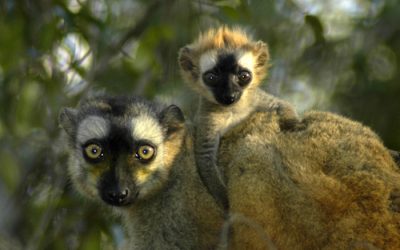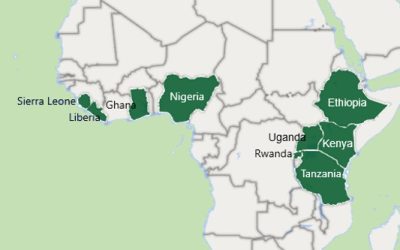Patience Juma wants to play an active part in protecting her country’s coastline. That’s why she is currently working for the Kenya Marine and Fisheries Research Institute (KMFRI), where her job includes helping to establish three new mangrove tree nurseries and planting out thousands of mangrove seedlings.
Now, thanks to a TBA training course, the outlook for Kenya’s mangroves – and Patience’s career – have taken a leap forward together. The course gave Patience -along with 16 other African conservationists, and two from SE Asia – knowledge and skills to have real impact in mangrove restoration and conservation in their own countries.
That is good news because people like Patricia are crucial in reversing the trend of mangrove destruction and degradation across the tropics. We owe a lot to mangroves. Sometimes dubbed ‘blue forests’ because they grow along coastlines and estuaries, these incredible ecosystems generate wide-ranging benefits that are literally vital, and not just for local communities.
Mangroves, with their characteristic root systems, provide essential habitat for thousands of species. They also stabilise shorelines, preventing erosion and protecting the land – and the people who live there – from waves and storms. What’s more, they sequester up to ten times more carbon than terrestrial forests, making them a key ally in combatting climate change.
In spite of all these benefits, mangrove deforestation rates are higher than those of other tropical forests. Clearance for agriculture, over-harvesting (the density of mangrove wood makes it desirable for construction, firewood and charcoal), over-fishing, pollution, rising sea-levels, and changes in salinity caused by river changes upstream all take their toll.
It’s a tough challenge, but one where tailored TBA training can really make a difference. The course was held over 5-days in Kenya in collaboration with KMFRI and the Kenyan community initiative, Mikoko Pamoja, and funded by WWF’s Russell E. Train Education for Nature Program. Participants learnt that mangroves can be restored – which means that all the benefits mangroves provide can return.
The most important lessons were learnt in the mangroves themselves, where participants visited a healthy mangrove forest that just 15 years earlier had been empty degraded land. They learnt how to design mangrove nurseries for healthy seedlings with the highest chances of survival once they are planted out. Crucially, they also learnt that the most cost effective way of restoring mangroves is to remove the threat in the first place and allow mangroves to regenerate naturally. Dr James Kairo, Chief Scientist with the KMFRI, and collaborator and teacher on the TBA course, said: “It’s really important to recognise cause of degradation in the first place. Then you can combine that with your knowledge of the site conditions and mangrove ecology.
“Successful regeneration is more than just planting trees.”
Key topics covered during the training included project planning, and latest developments in understanding ‘Blue carbon’: how mangroves store carbon, and how communities can earn money from carbon offsets. Reinforcing the TBA’s capacity building philosophy that former participants become effective trainers themselves, TBA alumnus, Josphat Mwamba, led a case study session on the Kenyan community initiative, Mikoko Pamjoa – the first mangrove carbon crediting facility in the world.
The participants now return to the task of applying their new skills and understanding and ideas to give mangroves, and all the benefits they bring, a brighter future.
“I was inspired and interested in how stakeholders are benefiting from carbon in mangroves and I want to replicate this in my country.”
Bertin Murhabale Cisirika, DRC
“We really need the capacity back home to do this. Before we just did restoration and we never had a clear plan yet this planning process you have shown us is fundamental to the success of our restoration projects.”
Jean Hude Ekindi Moudingo, Cameroon
“This is the most amazing workshop I have been to. You have enriched us all and we have gained new skills. I believe this will transform the way we do conservation and especially restoration.”
John Wanyoike Karungo, Principal Fisheries Officer, Kenya Fisheries Service
“On this workshop, all my questions were answered. The training gave me so many new ideas. One thing I will take home is how to apply the Theory of Change, where you can really envisage what impact you want to have.”
Patience Juma, Kenya







